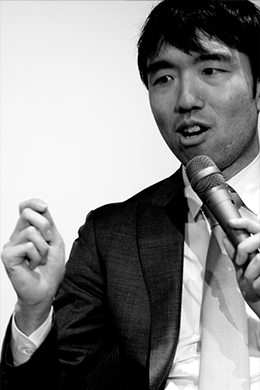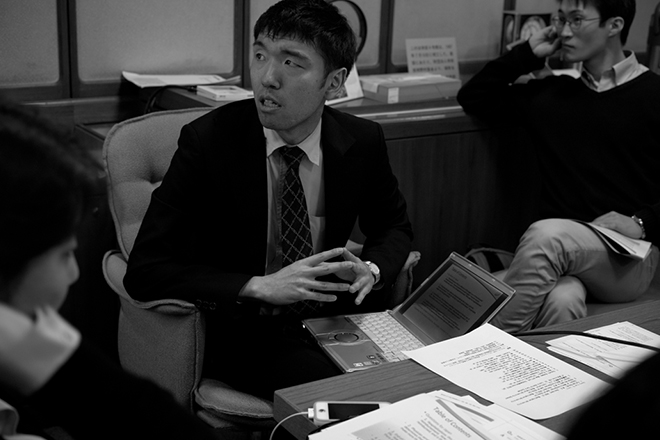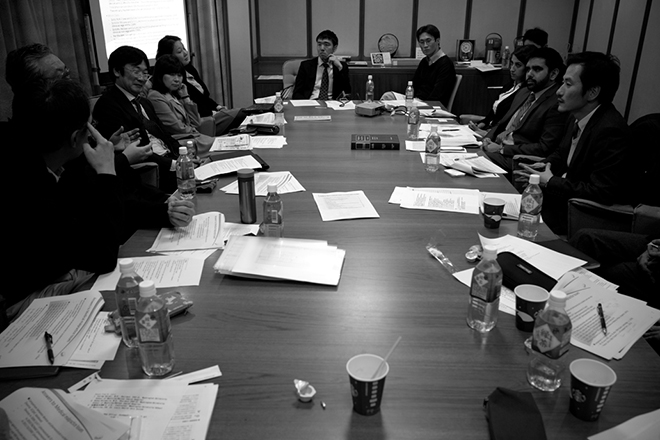Toward Sustainable Medicine
Chiaki Sato / Graduate School of Public Policy, University of Tokyo

5.Reformation of the Healthcare System through New Initiatives.
In the last four articles, we touched upon the concept of intervention through incentives based on performance with accountable care as an example and other initiatives to make Japan’s healthcare sustainable as we enter a super-aging society.
With regard to the ultimate issue of introducing accountable care in Japan, Dr. Sato states the following:
“The biggest hindrance when trying to change the health care system is our own belief to no small extent that ‘Japan’s health care system is the best in the world and does not need to be changed.’ We can speculate about its future based on statistics, but nothing can be predicted with certainty. Thus, we are afraid of changing the existing system with such an imperfect visibility. However, we (need to) take a step forward believing that there is something better ahead. Furthermore, I think what encourages us as we take the first step is an incentive.”
The social state of Japan has clearly changed since the 1960s, when the national health insurance system was established. Of course, the nation’s consciousness toward health has changed as well. Nevertheless, “changing our mindset” was cited as the first problem to be tackled. This seems to be a deep-rooted issue.
Incentive on the Basis of Performance Evaluation
An incentive is said to encourage us to take a step into a new world. As the incentive for accountable care is given on the basis of performance evaluation, it is essential to measure or evaluate the result after medical services have been provided, which is very difficult. Traditionally, doctors review medical examination data to judge and evaluate whether their patients’ health conditions have improved. Accountable care has significantly reformed this part. By correlating more than half the subsequent evaluation survey questions to patient satisfaction, patients can now self-evaluate the result of the treatment they received.
Measuring the degree of patient satisfaction is difficult as it depends not only on the doctors’ technical skill but also on the patients’ trust in their doctors and their emotional and psychological well-being. However, this does not mean that we do not need to include patient satisfaction as part of the subsequent evaluation. After all, the ultimate objective of providing medical services is to satisfy the patients.
In Europe and America, the term “doctor?patient relationship” is lately being changed to “patient?doctor relationship” based on the notion that it is important for doctors and patients to build a relationship where doctors show concern to the patient and discuss things to their hearts’ content without hesitation. This rephrasing comes as we realize anew the purpose of providing medical services.

To Design a New System that Everyone Can Join
The second goal that they proposed is to “change the system design.” As Dr. Sato points out, it is less effective to change just a system, but it actually takes a “grandeur change” when other relevant systems are also included . In the U.S., accountable care was introduced in steps by first designing the new system that each stakeholder feels comfortable to join. First, the U.S. administration invited all hospitals to adopt accountable care and then began running the system with only those hospitals that were willing to “adopt” it. Hence, it only required a report of the performance goals of each hospital in the first year and set the goal to satisfy approximately 20 items of evaluation questionnaire (out of all 33 items) distributed after providing medical service in the second year. Subsequently, in the third year, all 33 items included in the original accountable care were considered for ex-post evaluation to select hospitals that performed well. These hospitals were then given incentives. Thus, the system was implemented in steps by making it easier for many hospitals to participate in it.
“This is what America does well. They did not just give incentives but gradually increased the number of participants from a handful of them. This might not be something that Japan excels at.” (Dr. Sato)
There is a sign of change in the design of the system in Japan. The implementation of the Diagnosis Procedure Combination (DPC) System for the payment of medical costs in 2003 is considered as one such initiative. The combination payment is a prerequisite for the administration of accountable care, and it is becoming more common in Japan too. The ground is being leveled gradually for a wider acceptance of accountable care. While we obviously cannot say that all aspects of combination payment are good, it is noteworthy that the U.S. saved 38 billion yen a year in medical expenses since they adopted the combination payment. This result proves that the combination payment is a viable measure to counter disadvantages emanating from the system of healthcare fees as a payment at piece rates.
To Live Healthy, Long, and Better
The Ministry of Finance has conventionally viewed “a natural increase due to aging” and “the higher costs associated with advanced medical technology” as primary causes of rising medical costs. In particular, as the former is judged inevitable, the Ministry has refrained from taking a drastic measure to control it. However, from the viewpoint of accountable care, the question is raised, “Is natural increase really inevitable?”, and a new approach has begun. Let us say that we study the disease tendency of the elderly to come up with intervention treatments and use good medicine and medical equipment. Expenditures for development might temporarily increase, but they may be effective in lengthening the healthy lives of the aged, thereby enabling reduction of the total medical costs in the long run. Although it might sound like a utopian ideal, can we also say that to draw this sort of a vision for creating a new society is what it takes to step out of our existing fixed ideas?

“How about asking ourselves once again, ‘how can we live longer and healthier?’ In Europe and America, such policies have been adopted to facilitate investments in health including preventative measures, and the rest of the world is following their footsteps. As personalized medicine has become prevalent, patients can now access the information that only doctors could possess earlier. From this point onward, being able to exchange information with each other to make the society more health conscious will be increasingly vital.”
To have a healthy, fulfilling life is a common desire of humanity. The medical system helps to achieve it. Not until we witness in front of our eyes the breakdown of the national health insurance system, which has benefited the Japanese for over 50 years, will we appreciate the generous provisions of the current medical system. If we do not realize it, the day of reckoning would come that much earlier. We need to share such a sense of crisis on the current state and immediately begin the reformation. Instead of fretfully having an “emergency surgery on a dying ancient regime,” why cannot we challenge ourselves to “create anew” the world-acclaimed system? Good medicine tastes bitter, but one takes it with the hope that it works. It is high time we establish a new system to hold up the super-aging society by learning from precedents of each of the countries that are more advanced in the reformation of medical system and by sharing the bitterness of the reformation among medical service providers, patients, government, and businesses. We do not have much time left for hesitation before taking a bold new step.
Three Issues that the Japanese Finally Need to Tackle
1.To change the mindset regarding the medical system
2.To create a new system including the healthcare fees system and the method of medical treatment in designing a new system
3.To improve health consciousness on the part of patients themselves
What do the readers think?
◎Reference
・Diagnosis Procedure Combination (DPC) System
DPC is the abbreviation for Diagnosis Procedure Combination. This system has been implemented by advanced treatment hospitals since 2003. It is a comprehensive evaluation system for determining health care fees targeting acute phase hospital treatments. Healthcare fees are determined by diagnostic group classification in contrast to fees determined by how much costs were incurred under the system of payment at piece rates. As of 2012, this payment system accounted for 53.1% of all normal sickbeds in Japan. It has been widely used in Europe and U.S; it was proposed by the Health Care Insurance System Reform in the U.S. (known as Obama Care) as a measure to reduce medical costs. In 2009, in its review of Japan’s existing system, which combines both DPC payments and payments at piece rates, The organization for Economic Co-operation and Development advised Japan to expand the scope of application of DPC.
